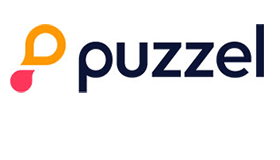Colin Hay of Puzzel explains the psychology of customer behaviour and suggests a plan to improve customer interactions in contact centres.
At Puzzel, we often talk about “emotional intelligence” and how important it is for keeping customers happy. What we really mean is that good customer service is not just about dealing with enquiries quickly but demonstrating that agents understand the customer’s emotional state when responding to them.
Getting to grips with the psychology behind customer behaviour to drive better conversations in the contact centre was a highlight of Get Connected, our customer conference this year, when we were lucky enough to have Ziba Goddard, Head of Core Consulting at Cowry Consulting, as a guest speaker.
Ziba enlightened delegates about the Homer Simpson effect, i.e that 90–95% of decisions that people make are down to instinct, just like Homer. If you apply this to selling and customer service, it’s a scary thought because it means that most people will respond based purely on emotion.
Know Your Alphabet
According to Ziba, this makes understanding how the human brain works essential, because “knowing how customers make purchasing decisions allows contact centres to improve customer and company outcomes.”
It all comes down to three important psychological triggers or biases that can be used to improve agent conversations and encourage customers to buy.
It’s as easy as A B C:
1. Authority Bias – this is all about following the leader. The truth is that people tend to trust figures of authority like doctors or even TV celebrities! This bias highlights the benefits of agents taking ownership of their customer interactions.
2. Cognitive Overload – less is definitely more. How many times have you left a store empty-handed because there was just too much choice? Having too many options often prevents people from deciding for fear of making the wrong decision.
3. Commitment Bias – is the principle that human beings are easily hooked once they’ve told another person of their commitment to do something. New Year’s resolutions are a good example. If we tell people we are determined to cut down on drinking or lose weight, we generally do!
Transform Training and Technology to Influence Customer Behaviour
Understanding these psychological triggers will transform your approach to training forever. Teach your agents how to use this new understanding to influence customer behaviour and they will soon see positive results.
Consider the following techniques and back them up with the latest cloud-based contact centre technology to improve outcomes and performance:
Gain Control of the Conversation
Find ways to own the conversation, for example by encouraging agents to introduce their name and position and showing the customer your organisation really cares about their business.
Rather than “Hello, my name is x, how can I help you today?” why not try “Hello my name is X, I’m your customer service representative today. Can I start by taking your name and customer reference number please?”
By asking a direct, but non-threatening, question the agent immediately takes control of the call. Then, rely on intelligent call routing to transfer customer calls automatically to the best-skilled available agents quickly and efficiently. Make callers feel extra special by taking advantage of CRM data to prioritise VIP customers.
Suggest Three Positive Solutions
The human brain is best at digesting information in groups of three. Just think of successful marketing campaigns like “Stop, Look and Listen” and “Snap, Crackle and Pop”.
Adapt this ‘power of three’ rule to your own agent conversations by giving customers three positive solutions to their problem. Mention the most important one first then avoid complicated jargon.
Of course, it makes sense to start taking an honest look at your existing call scripts. Once you are satisfied they are easy to grasp and compelling, supplement them with call recording and speech or voice analytics technology to put your new understanding of psychology into practice.
Are scripts getting the required results or, for example, are customers repeating themselves? Another option is to save time by transferring the three options to an IVR menu that gives customers the ability to self-serve and therefore immediately reduce call lengths by pre-qualification combined with call routing and queue management in the cloud.
Make the Most of Silence
Test out your own contact centre. If an agent puts you on hold, are you left hanging in silence wondering if they are still there? This is the dreaded ‘dead air’ that makes customers feel awkward and damages rapport.
Encourage agents to introduce silence with statements like: “If I go quiet for a few moments, it’s because I want to make sure I have the most accurate and up-to-date information for you. Is that OK?”
Minimise the length of silences by tapping into shared knowledge and learning through online knowledge bases and FAQs. Finally, maximise the power of integration in the cloud.
Today’s solutions link seamlessly with in-house CRM applications to give agents a complete and instantaneous view of essential caller information to prevent the dreaded repetition of information by the customer.

Colin Hay
Agents can even use the latest ‘Click-to-Call’ features to launch outbound calls, e.g. for timed call-backs, directly from the CRM application without having to switch between systems or screens.
By finding practical applications for psychological principles you’ll find the key to winning customer interactions. Make Homer Simpson your friend and maximise the power of cloud-based contact centre technology to improve performance and the customer experience in your organisation.
For more information about Puzzel - visit the Puzzel Website
Author: Puzzel
Published On: 22nd Oct 2018 - Last modified: 26th Feb 2025
Read more about - Expert Insights, Call Handling, Colin Hay, CX, Emotion, Puzzel






 Puzzel is Europe’s leading cloud-based contact centre solutions provider, serving over 1,200 organisations in 40 countries.
Puzzel is Europe’s leading cloud-based contact centre solutions provider, serving over 1,200 organisations in 40 countries. 




























